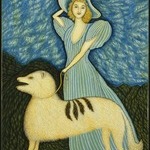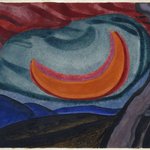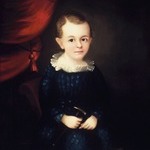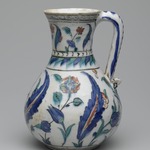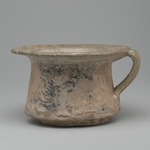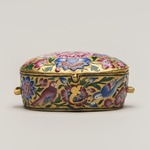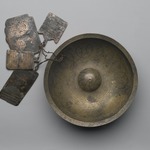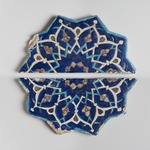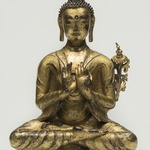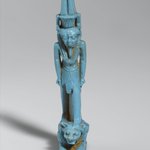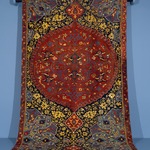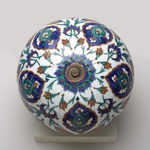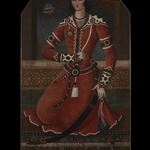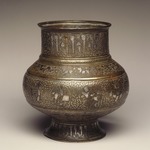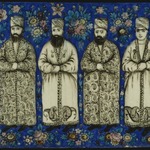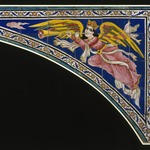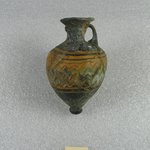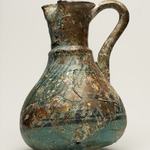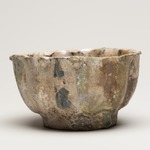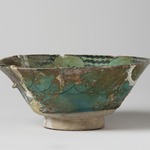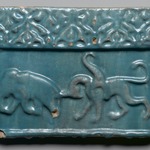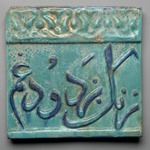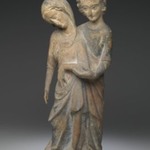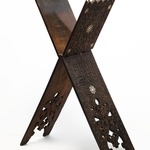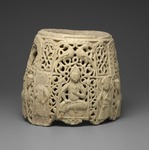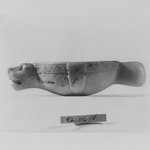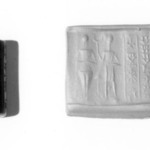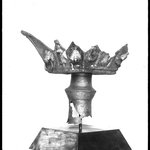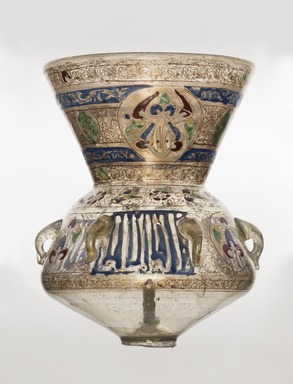

Mosque Lamp, 13th–14th century. Colorless glass; blue, green, red, yellow, and white enamels; and gold; free blown, applied, enameled, and gilded; tooled on the pontil, includes base, now detached: 12 x 8 in. (30.5 x 20.3 cm). Brooklyn Museum, Bequest of William H. Herriman, 21.484. Creative Commons-BY (Photo: Brooklyn Museum, 21.484_PS11.jpg)

Mosque Lamp, 13th–14th century. Colorless glass; blue, green, red, yellow, and white enamels; and gold; free blown, applied, enameled, and gilded; tooled on the pontil, includes base, now detached: 12 x 8 in. (30.5 x 20.3 cm). Brooklyn Museum, Bequest of William H. Herriman, 21.484. Creative Commons-BY (Photo: Brooklyn Museum, 21.484_during_treatment_view3_PS9.jpg)

Mosque Lamp, 13th–14th century. Colorless glass; blue, green, red, yellow, and white enamels; and gold; free blown, applied, enameled, and gilded; tooled on the pontil, includes base, now detached: 12 x 8 in. (30.5 x 20.3 cm). Brooklyn Museum, Bequest of William H. Herriman, 21.484. Creative Commons-BY (Photo: Brooklyn Museum, 21.484_detail_PS11.jpg)

Mosque Lamp, 13th–14th century. Colorless glass; blue, green, red, yellow, and white enamels; and gold; free blown, applied, enameled, and gilded; tooled on the pontil, includes base, now detached: 12 x 8 in. (30.5 x 20.3 cm). Brooklyn Museum, Bequest of William H. Herriman, 21.484. Creative Commons-BY (Photo: Brooklyn Museum, 21.484_during_treatment_view5_PS9.jpg)

Mosque Lamp, 13th–14th century. Colorless glass; blue, green, red, yellow, and white enamels; and gold; free blown, applied, enameled, and gilded; tooled on the pontil, includes base, now detached: 12 x 8 in. (30.5 x 20.3 cm). Brooklyn Museum, Bequest of William H. Herriman, 21.484. Creative Commons-BY (Photo: Brooklyn Museum, 21.484_during_treatment_view2_PS9.jpg)
Mosque Lamp
Arts of the Islamic World
On View: Arts of the Islamic World, 2nd floor
Enameled glass lamps like this hung from a mosque ceiling on chains. The illuminated glow of the lamp symbolized divine light and, by extension, the presence of God. The Mamluk period in Egypt and Syria produced some of the finest examples of such lamps, which were commissioned to illuminate the interiors of Mamluk mosques and charitable foundations. This is the most characteristic type, with a flared neck, a rounded body with six handles, and a wide foot. It is one of the few Mamluk mosque lamps, however, with its wick still intact.

